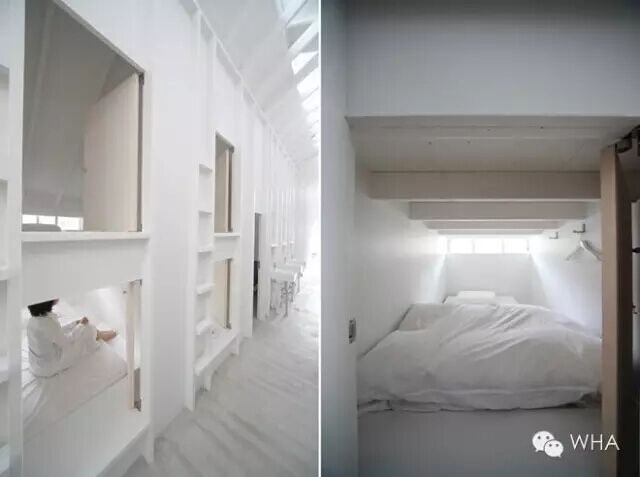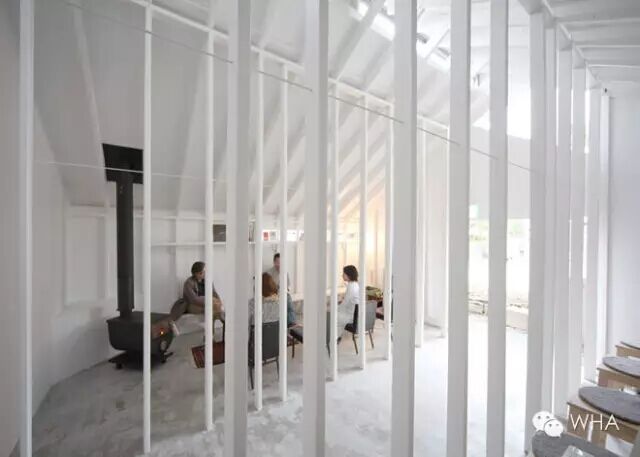不管是真是假,日式膠囊酒店的超第五元素感深得人心,即便酒店員工不是一群機(jī)器人。這座酒店由京都的Alphaville建筑事務(wù)所精心打造,給人眼前一亮的感覺(jué)(可是住在這多多少少還是會(huì)有點(diǎn)幽閉恐懼)。

酒店清一色的白色以及簡(jiǎn)約的木材建筑讓酒店看上去別具一格,酒店的窗戶排列參差有序。酒店的窄邊天窗沿著一邊的墻伸展而開(kāi),這也是Alphaville的意圖所在,他們采用這樣的設(shè)計(jì),微弱的陽(yáng)光可以透過(guò)酒店從高處投射進(jìn)來(lái),這也與日本的建筑文化緊密呼應(yīng)。



建筑師們說(shuō),這種日式膠囊酒店可以在很好地保護(hù)客人隱私的同時(shí)保障客人之間交流通暢。在酒店盡頭有起居區(qū)和餐飲區(qū),里面有小吧臺(tái)和管式爐灶。

Bright New Capsule Hotel Defies the Gloomy Sci-Fi Standard
True or not, the popular image of Japan's capsule hotels is pretty Fifth Element, even when they aren't staffed by robots. Which is why this guesthouse, by Kyoto-based studio Alphaville, is such a breath of (still kind of claustrophobia-inducing) fresh air.
The overwhelming whiteness and the simple wood construction help set the place apart, as do the small windows in the rooms, which are stacked on top of each other. Narrow clerestories run along the top of one wall, which Alphaville implemented to bring a "subtle light from far above through the wooden structure, in tribute to traditional Japanese architecture."
The architects tell Dezeen the idea was to mix "a Japanese capsule-type hotel in which the privacy is well protected, and a dormitory in which the communication among the guests is active." To that end, there's a living and dining area at one side of the structure, which has a bar and a wood-burning pipe stove.
